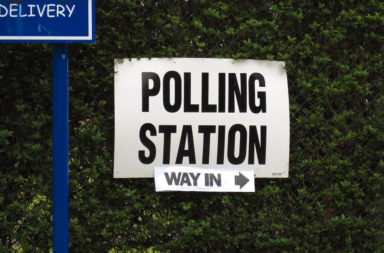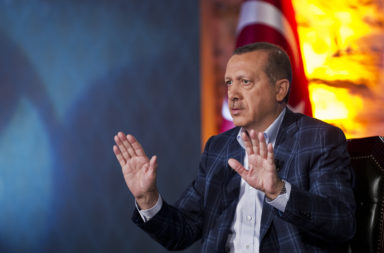The dramatic situation in Aleppo and other parts of Syria in August 2016 shows that we need clear actions for the people living in the ruins of war. Still to many words and too little actions on the ground.
The first step is now six months away. The Munich Agreement on cessation of hostilities and humanitarian aid to besieged areas across the country from February 11/12th, 2016 was achieved, but the fights continue and millions of desperate Syrians are fleeing to save their lives.
Implementing the cessation of hostilities and humanitarian aid should start with establishing several Safe Hope Zones (SHZ) and No-fly Zones (NFZ) within Syria as pockets of peace and stability to contain this bitter civil war and avert deeper humanitarian catastrophe.
This is an urgent appeal to establish such zones, as well as a mean to cool-down the diffuse confrontation, which can spiral dangerously out of control.
Above you can see the destruction of Aleppo. Who wants to live there and who can live there any longer?
Turkey is seeking to create a “safe line” inside Syria that would include the flashpoint northern town of Azaz near the Turkish border. “We want to form a 10-kilometre (six-mile) safe line inside Syria, including Azaz,” Deputy Prime Minister Yalcin Akdogan told in an interview in February 2016.
German chancellor Angela Merkel promotes „safe zones“. The EU summit supported her idea in February 2016.
It is not the time to be pessimistic only, but to act forward thinking.
The main enemy of stability in the region as well as for Europe, Russia and the United States is Daesh (IS, ISIS or ISIL). The priority has to contain those forces of inhumanity in 2016.
A stable Syria needs a cooling-down of hostilities to allow negotiators to find a political solution, which will need compromises.
Safe-Hope- Zones could become a bridge to the future of Syria and a catalyst for peacemaking.
All parties involved should not forget: What looks like a tactical victory today, may become a strategic defeat the day after tomorrow.
With so many actors involved, it seems unclear who will win at the very end.
All involved have to look for exit and long-term-peace-options as well and a stable design for this region in the framework of the United Nations.
It may be as well a common interest of all fighting elements involved, including Russia, Turkey or Assad, to find pragmatic solutions, which could start with the establishment of several Safe-Hope-Zones.
This allows as well focusing on the defeat of Daesh (IS, ISIS or ISIL), which is a common threat.
In this paper of the World Security Network Syria Working Group you may find some ideas for discussions, including past best practices of earlier no-fly zone missions.
1. Priority is Safety for Syrian civilians
States neighboring Syria and Europeans must make safety their number one priority.
Time is of essence. Actions are needed now.
Millions of civilians are fleeing the civil war just to survive.
The European states and the United States of America should present a detailed plan for Safe-Hope-and No-Fly-Zones (SHZ/NFZ) urgently to the UN Security Council.
The zones should be authorized under Chapter VII, article 42 of the UN Charter by the UN Security Council “taking actions by air, sea, or land forces necessary to maintain or restore international peace and security.“
Russia has to agree and not veto the resolution. This seems unlikely today, but a deeper analysis in Moscow may lead to a consensus, as this is the best option to cool down the conflict and defeat Daesh. This is the main treat for Russia.
Safe-Hope-Zones (SHZ) and No-Fly Zones can reduce the exodus out of Syria. Otherwise the refugees will continue to leave, despite the desire of most Syrians to stay in their country. This wish to stay at home must be met to avoid a major exodus in 2016 of another million desperate people.
Safety, not just a cease-fire, is needed to start on the path to credible, robust and long-term security.
Hope and a vision for peace are imperative and would enable the Safe Hope Zones to serve as light-houses for peace and humanity.
Policy makers need a strategy that provides security and enables rebuilding with economic perspectives.
The people need humane living conditions in the cities and villages. Life with human dignity begins with safety first.
The UN should agree on a robust mandate with joint control, and a fire-and-command-center.
Attacks only against IS and al Nusra-targets would be allowed and done in prior agreement with a coordination center.
Local fighters, like the Kurdish YPG forces, must leave their heavy weapons outside. Including a cease-fire, these areas will be carved out of the war.
The UN, under Chapter VII of the Charter, would ban and control all activities of planes and helicopters with exceptions agreed in the center.
Needed are air- and ground forces to control and implement these no-fly-rules.
“Operation Provide Comfort“ in Iraq for the protection of the Kurds against attacks by Saddam Hussein from 1991 serves as an example for a No-Fly Zone. We must use as well best practices from other conflict areas like the Balkan wars.
International UN forces should be considered for deployment through a robust mandate and armed with heavy weapons. Troops from Pakistan, South Africa, Mongolia, and South Korea could be integrated.
US Special Forces should support the UN effort to make the security guarantee credible.
Russian Special Forces could provide security in other selected areas.
The UN could recruit local Syrians as policemen and officials.
The no-fly-zone administration will be put under the leadership of an UN administrator and his staff.
In each city the local authorities will be integrated in round tables.
We need quick action on the ground, not more words, but the timely implementation of concrete measures.
Safe-Hope-Zones in Syria can start with few peace-pockets and expand later.
Some cities offer a link like a necklace from the West (Jisr Shughur, Saraqib, Abu al-Duhur), via Aleppo and Azaza near the border to Turkey, to the Western parts of Syria, including cities freed from the terror of ISIS (IS, ISIL or Daesh) like ar-Raqqah, Dier ez-Zor, and Al-Hastheh.
Needed are No-Fly-Zones for the large cities like Aleppo and even the capital Damascus as well.
The Safe-Hope-Zones will be funded immediately with USD 5 billion in cash on a special UN FHZ-account.
Countries that are impacted most by the influx of refugees could offer more capital and boots on the ground to secure.
The amount could perhaps be calculate based on the money that they would have spent on the refugees if they had already immigrated into their territory.
Using best practices from other civil war countries, quick actions for stability should be implemented.
The SHZ must provide security and better living conditions. This includes water supply, electricity, and waste management or hospitals and schools- need to be repaired soon.
The funding of the re-building of destroyed homes by the people should be supported with thousands of small quick-hope-loans of USD 25,000 for each family.
Renovation of all Sunni and Shia mosques and all churches should be done as well as schools, hospitals, or historic buildings.
A first funding of local business with a credit of USD 50,000 each is needed as well.
The EU should establish several local one-stop-centers for trade and stimulate it by way of a Preferential Trade Agreement (PTA) and secure exports via Turkey.
The SHZ should become as well safe economic zones, providing economical perspectives in addition to safety.
These zones would give refugees the opportunity to work, providing jobs, training, and education.
Corporations that have lost out on business in Syria due to the conflict, could have an interest in relocating to these safe economic zones and could be incentivized to put up private capital.
UN-Checkpoints will control the entrances to the SHZ and issue special ID-cards for residents.
The SHZ will stay within the territorial rules of Syria, but under special UN administration, which will end with a new constitution for the country coming into force.
2. Implementation of the Munich Agreement.
There was no commitment to end Russian airstrikes against “terrorists” in the Munich Agreement of the International Syria Support Group from February 12th, 2016. Therefore the fighting and bombing continued.
The Vienna peace talks should demand an end to the Russian bombing campaign in defined areas of the SHZ and broader regions to focus on Daesh.
Opposition rebel military and militia groups must be included in a cease-fire agreement and must withdraw their heavy weapons and stop attacks in Damascus and on government troops.
3. Reconciliation must begin from day one to address the roots of the conflict
Understanding and a code of tolerance towards all religions and ethnic minorities must flank the military intervention. The hawk cannot bring peace alone.
A fresh creative double strategy of power and reconciliation, hard and soft factors of peacemaking, is needed and must be funded and implemented.
This is the experience of the Europeans after two bitter wars.
A Codes of Tolerance Program should be implemented from day one, based on the foundation of the global consensus of the UN Charter and the Declaration of Human Rights.
A special Tolerance Administrator and a team will be established and funded with USD 500 million to promote all kinds of local reconciliatory projects.
This reconciliation process will include all, but exclude Daesh and al-Nusra.
In each city a round table will discuss all contentious issues.
Local Truth and Reconciliation Commissions will be founded to document war crimes and look for ways to promote consensus.
The leaders of the Christian, Sunni and Shia communities will be asked to moderate this process.




